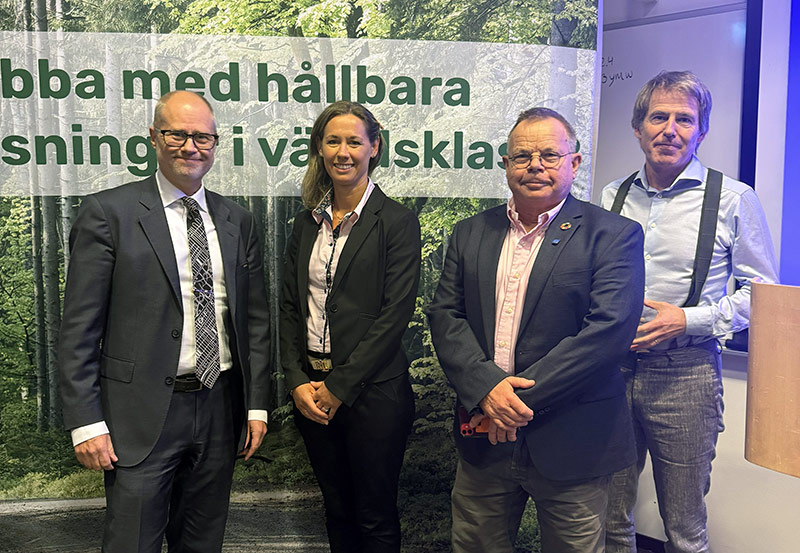KTH Students and NIBE Drive New Circular Heating Concept

A student team from KTH has developed a winning concept for NIBE that rethinks the heat-pump industry through a circular, service-based model. The project, created by third-year energy-system students in close collaboration with NIBE, proposes “heat as a service” instead of traditional product ownership — a shift the jury praised as both innovative and aligned with future EU requirements.
A week-long collaboration between NIBE and third-year students from KTH’s Industrial Engineering and Management programme (specialising in Energy Systems and Sustainable Development) has resulted in fresh ideas for how the heat-pump industry can meet future circular-economy demands. The winning concept, “Nibe ComplHeat,” was developed by students Linn Hellström, Clara Giertz, Axel Schelander, William Bilk and Emma Fernler, and was praised for rethinking both ownership and lifecycle management of heat-pump systems.
The assignment challenged six student teams to propose new services that reduce material use, extend product life, and create profitable business models aligned with upcoming EU requirements. Over an intensive five days, the teams explored how NIBE’s products and digital services could evolve to meet expectations for sustainability, user-friendliness and long-term value creation.
The final presentations were held at Scandic Anglais in Stockholm in front of a joint KTH–NIBE jury, including Professor Per Lundqvist (KTH), Martin Forsén, Emma Tidstrand, Claes Hemberg and Emma Hällgren from NIBE, as well as Harald Ingemarsson representing KTH. The jury noted that the ideas were unusually strong and the competition extremely tight.
The winning proposal, “Nibe ComplHeat,” was built on the principle of heat as a service. Instead of purchasing a heat pump, customers would subscribe to reliable indoor comfort delivered and managed by NIBE. The model gives the manufacturer full control over maintenance, performance and the entire lifecycle of the product - enabling refurbishment, reuse and more efficient recycling of returned units.
Other student groups also presented forward-looking ideas, including neighbourhood-shared heat-pump systems (“Nibe Hoods”), modular product designs for easier component replacement and reuse, and redesigned digital apps that provide clearer service information and sustainability insights.
When announcing the winner, jury spokesperson Martin Forsén highlighted why the concept stood out: “ComplHeat offers a sharp business model that extends product lifespan and creates new revenue opportunities through refurbishment and reuse. It is a concrete step toward a more circular and resource-efficient economy.”
Emma Tidstrand, Program Manager for Circular Economy at NIBE, emphasised how valuable the insights were: “This generation has a very different view on ownership. They want worry-free warmth, not another device to manage. The students captured that shift perfectly.”
The collaboration reflects a growing need for cross-sector innovation that combines engineering, sustainability and business thinking. As Professor Per Lundqvist noted, projects like this train students to solve “unstructured, real-world problems” - skills that will be essential as the industry transitions toward circular and service-based models.

This year’s competition demonstrated that the next generation of engineers sees the future of heating not as hardware ownership, but as long-term comfort delivered sustainably - and that companies like NIBE are ready to explore that future together with them.
More articles in Swedish:
”Jag vill inte äga en värmepump – jag vill ha värme” | energi-miljo.se
